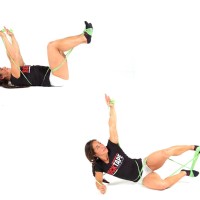
Image courtesy of RockTape® and Perry Nickelston (Stop Chasing Pain)
Supine to Oblique Sit Roll
The supine to oblique sit roll is an exercise that simulates an ipsilateral rolling pattern. The maturing baby first learns to stabilize in the sagittal plane – either on their back or stomach (supine/prone).
A weightlifter squatting is utilizing the same sagittal plane muscle coordination and joint centration as the three-month year old. Intra-abdominal pressure is the key to trunk stabilization and is first learned on the ground. Rolling is a great way of revisiting patterns that are hardwired into our nervous system.
My last blog, “Can you breathe away hamstring tightness” examined the 90/90 supine position for restoring core stability. Poor core stabilization often results in the sensation of hamstring tightness. After stabilization is achieved in the sagittal plane the 4.5-month year old baby transitions to ipsilateral (rolling) then contralateral (crawling) positions to achieve stability.
Since becoming certified in DNS (Dynamic Neuromuscular Stabilization) I am always looking for ways to train muscles in developmental positions for greater stabilization.
“Muscles may be strong enough in their phasic functions (anatomic), but lack in their postural functions (stabilization).” – DNS Course Manual
Many glute exercises (sideyling leg raises and clam shells) involve the leg moving around the fixed pelvis. These types of exercises train the anatomical function of the glutes but not the stabilization function. Note that this is not ‘wrong’, but many coaches neglect to train the stabilization function focusing exclusively on the anatomical function (i.e.: the glutes do a,b,c to the thigh so I will train abduction, external rotation, etc…). Great coaches (like Bret Contreras) train both.
Image taken from book, “Strong Curves” by Bret Contreras
“Hip and groin issues are common in both sedentary and active people. Most exercises for this region involve moving the thigh (femur) in/out (adduction/abduction) or forward/backward (flexion/extension).
In each of these motions the thigh moves against the pelvis. Yet, in walking, running, kicking, throwing, etc. much of the athleticism or power comes from pelvis moving against a fixed thigh.” – Craig Liebenson
The oblique sit position (above) is used to train this function of the pelvis around a fixed lower limb. The 7.5 month old baby progresses from rolling on to their side to sitting into this position.
The supine to oblique sit roll (video) is a great exercise for training this ipsilateral roll and support position.
Note: You don’t have to fully straighten the bottom arm. You can come up onto the elbow and lift the hips (as a variation or regression).
Thanks to Zac Cupples for posting this video (http://zaccupples.com).
– Kevin Kula, “The Flexibility Coach” – Creator of FlexibilityRx™ – www.FlexibilityRx.com
Related Resources
Craig Liebenson: The Low Diagonal Oblique Sit Exercise (link)
FlexibilityRx: The Kolar Wall Bug Exercise for Core Stability (link)
FlexibilityRx: Can You Breathe Away Hamstring Tightness? (link)
Craig Liebenson: Bridging the Gap (link)
Tags: baby-getup, Craig Liebenson, DNS, dynamic neuromuscular stabilization, FMS, ipsilateral rolling, oblique sit, Prague School of Rehabilitation
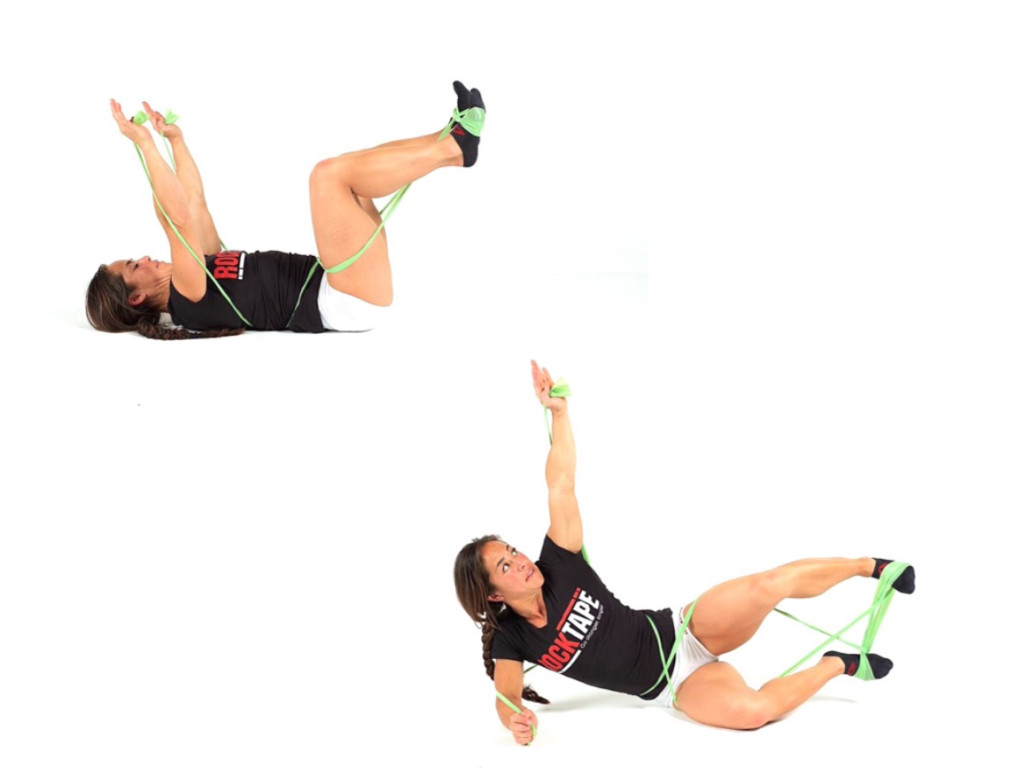
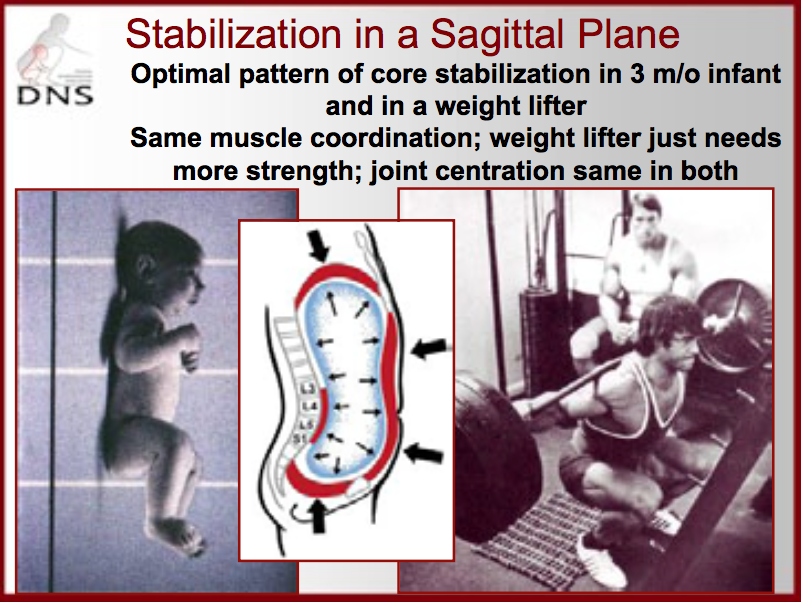
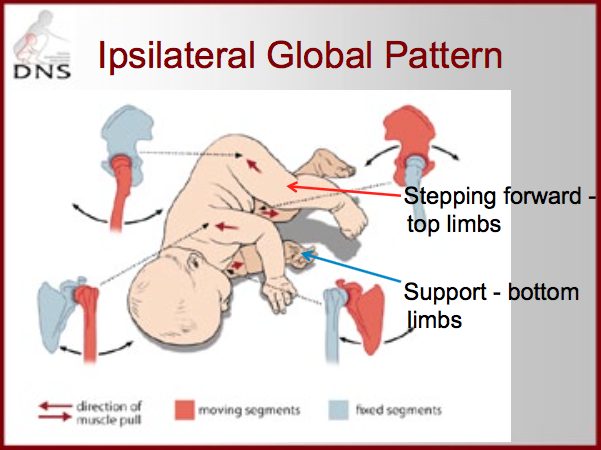
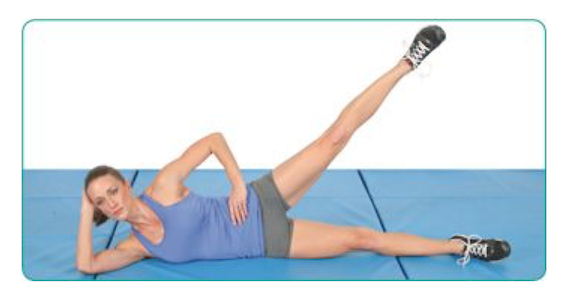
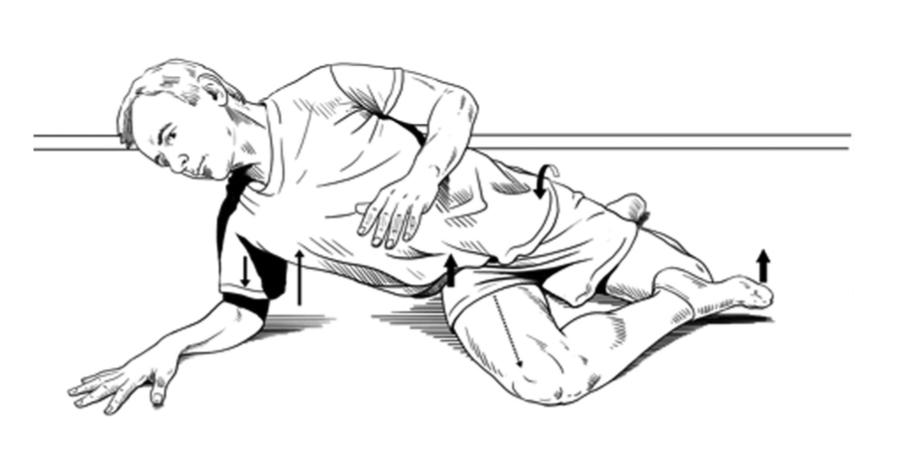
Leave A Reply (No comments so far)
You must be logged in to post a comment.
No comments yet